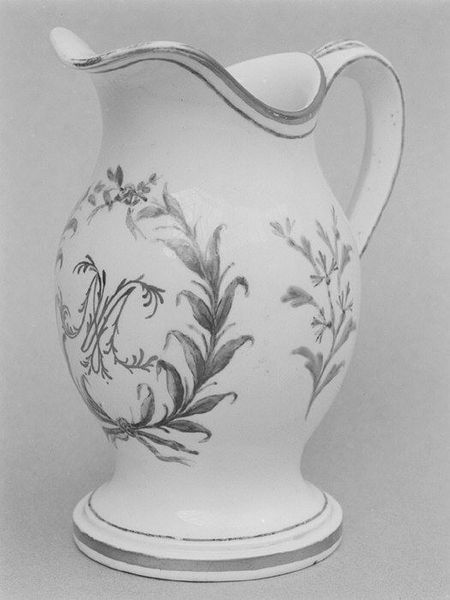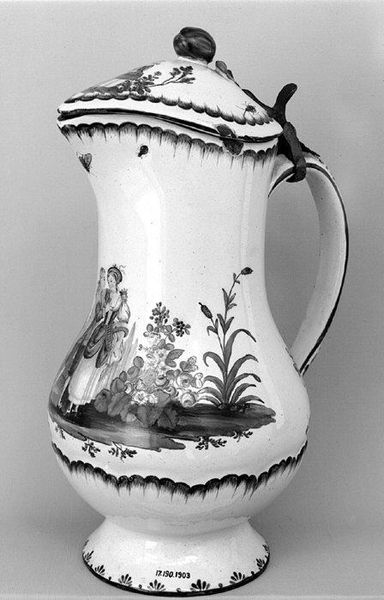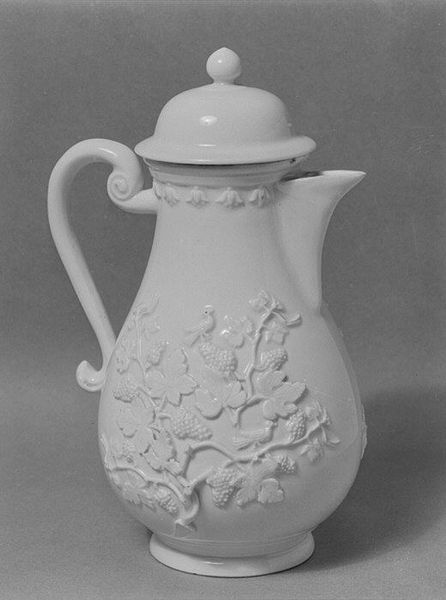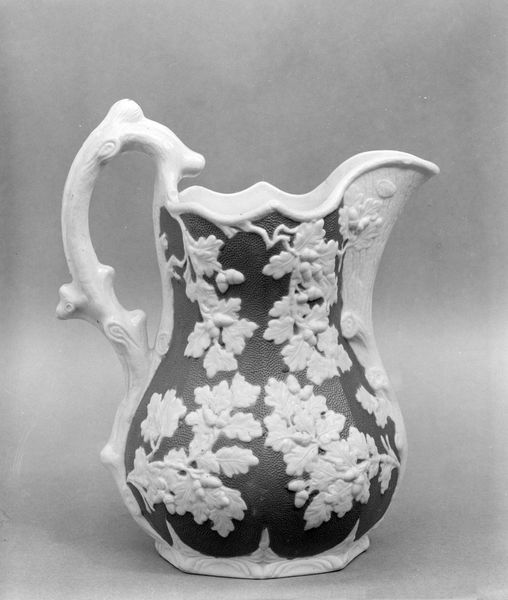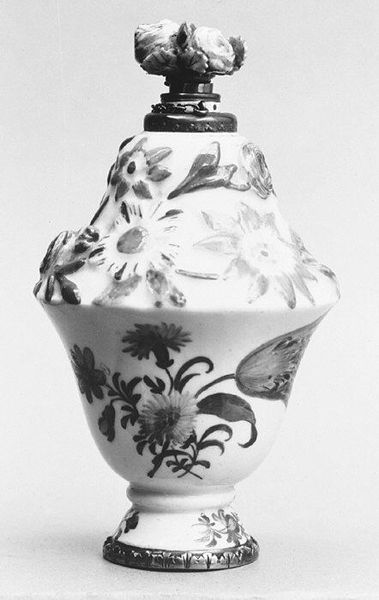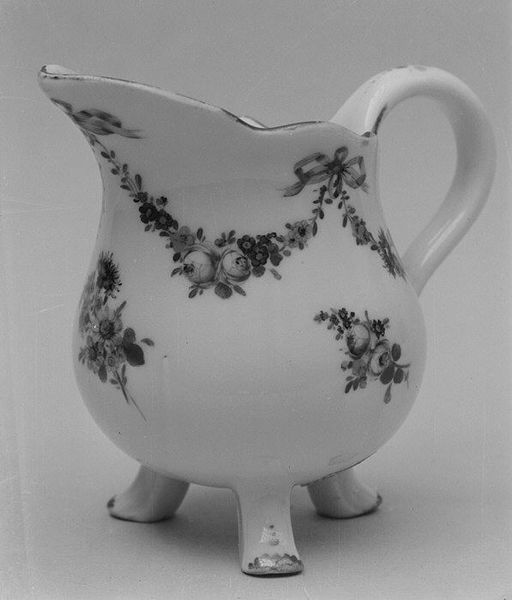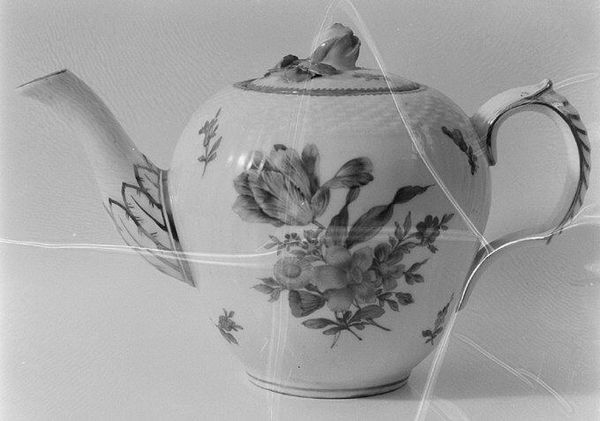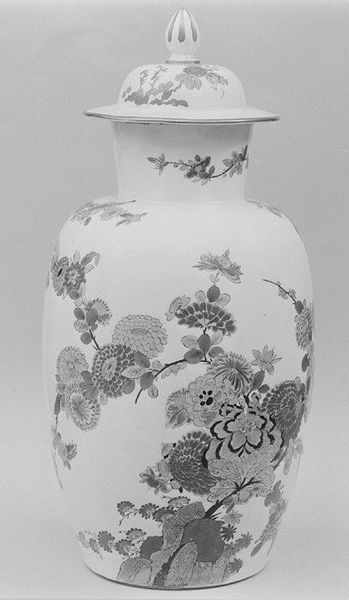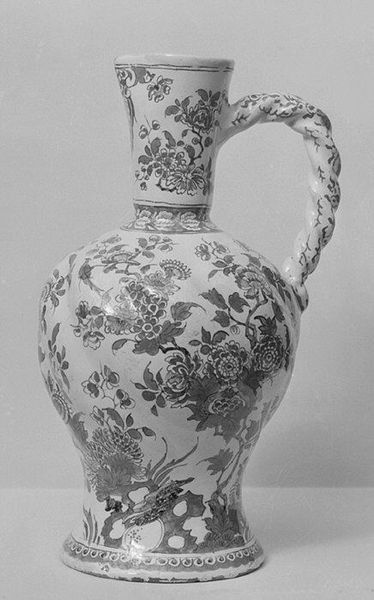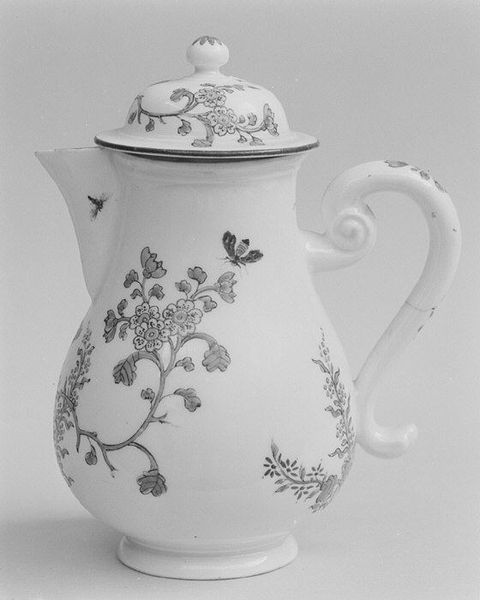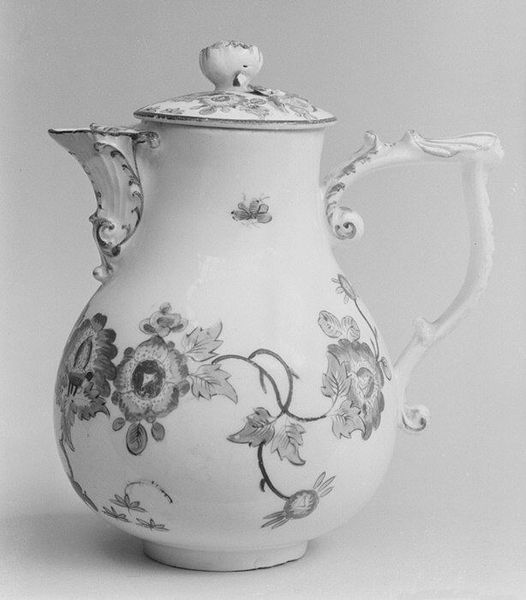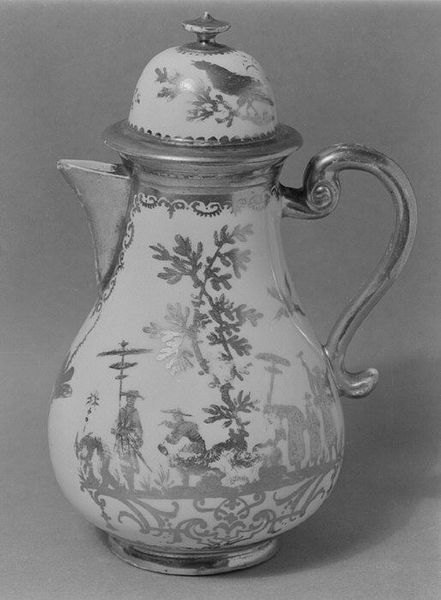
ceramic, porcelain, sculpture
#
ceramic
#
porcelain
#
sculpture
#
romanticism
#
ceramic
#
decorative-art
Dimensions: Height: 10 1/2 in. (26.7 cm)
Copyright: Public Domain
Curator: We’re looking at an “Ewer” made sometime between 1805 and 1825, currently held at the Metropolitan Museum of Art. It’s a ceramic piece, specifically porcelain. What catches your eye? Editor: The delicate porcelain seems to almost glow, doesn’t it? It has a remarkable lightness, an airy grace despite being a functional object. I imagine it sitting on a table reflecting light and casting intricate shadows. Curator: Absolutely, and that feeling is carefully constructed. The painted floral sprigs evoke feelings tied to the Romanticism movement which emerged with idealized depictions of nature—there is also, certainly, that symbolic association between the blossoms depicted and freshness. What kind of labor went into the creation of something like this at that time? Editor: A great deal! Porcelain production was a highly specialized industry. Think of the various hands involved: from the mining and preparation of the kaolin clay, to the molding, firing, and, of course, the painting. The porcelain itself speaks to a highly developed industrial process of the period, likely indicating manufacture in one of the major porcelain production centres. It's not simply an aesthetic object; it’s a crystallization of industry, skill, and access to specific raw materials. Curator: Indeed. The careful application of those metallic accents at the lip, the base, and the handle underscore the symbolic richness that such refinements can confer. Think about who would have possessed something like this. Were these ever widely distributed objects? Editor: Not in the least. This piece would signify a specific social standing and purchasing power. We must recognize how intertwined artistry and consumption were—porcelain objects served as demonstrations of refinement but also the economic and material networks supporting this aesthetic. It forces us to question ideas of craft as divorced from social structures. Curator: An astute reminder that art is never created or viewed in a vacuum, no matter how pristine its porcelain surface. Editor: It definitely leaves one to think about what is truly functional, aesthetically and socially.
Comments
No comments
Be the first to comment and join the conversation on the ultimate creative platform.
